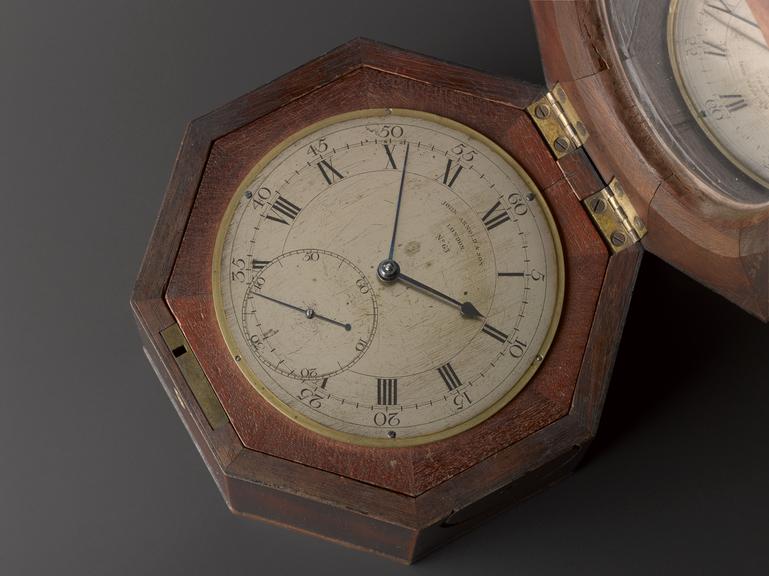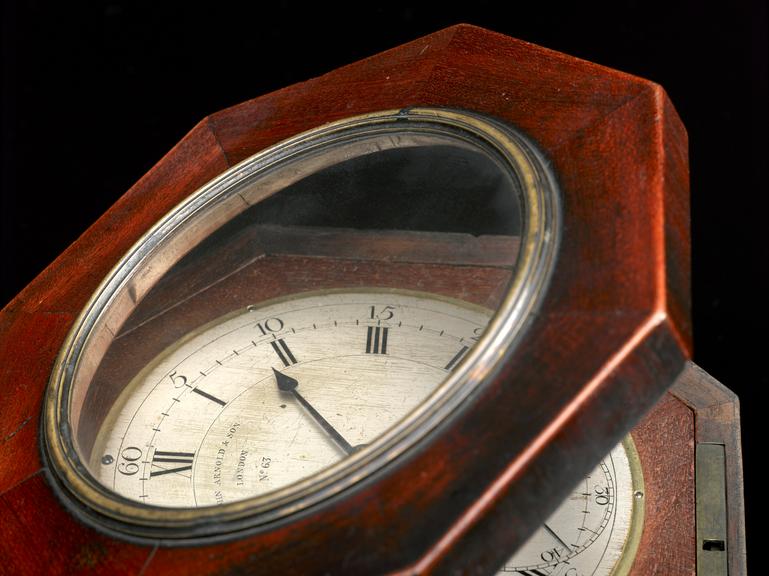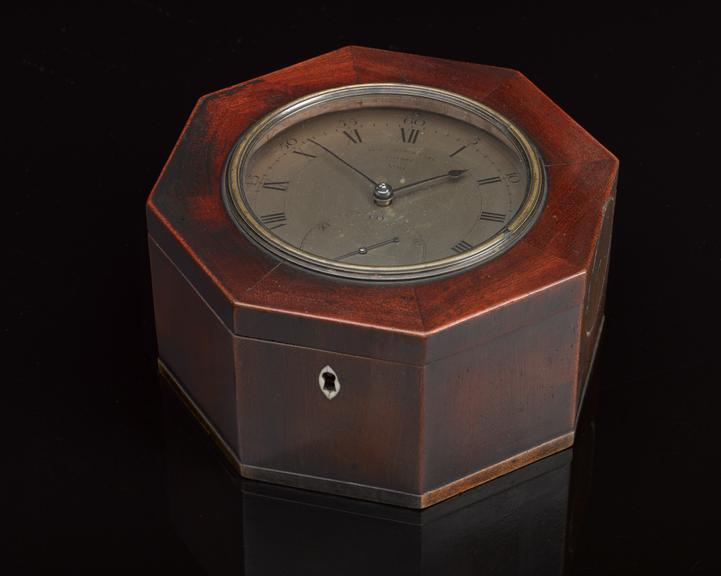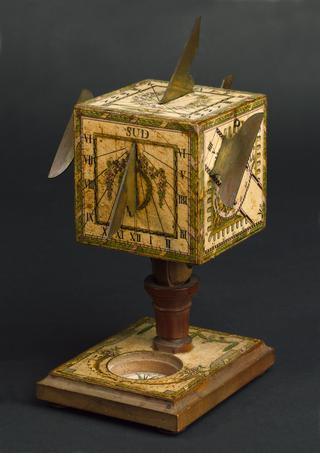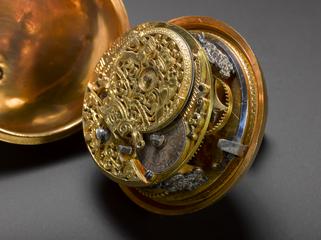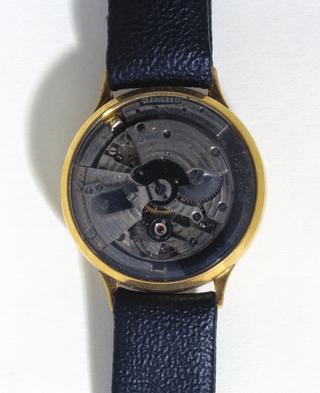Marine chronometer by John Arnold and Son, 1787-1799
Two-day marine chronometer (No 63) by John Arnold and Son, Cornhill, London, 1787-1799.
More
Finding longitude at sea had long been a concern for navigators. Chronometers, first devised by John Harrison in the mid-1700s, kept a record of time at the Royal Observatory, Greenwich. When navigators compared this with local time at sea, determined from observations of the Sun or stars, they were able to find their longitude. John Arnold was one of Britain’s leading makers of chronometers at the end of the 1700s.
- Measurements:
-
diameter: 120mm
height: 75mm
weight: 1.095kg
weight: 2.41407lbs
- Materials:
- brass (copper, zinc alloy) , steel (metal) , glass and wood (unidentified)
- Object Number:
- 1879-31 Pt1
- type:
- instrument component and chronometer
- Image ©
- The Board of Trustees of the Science Museum, London







